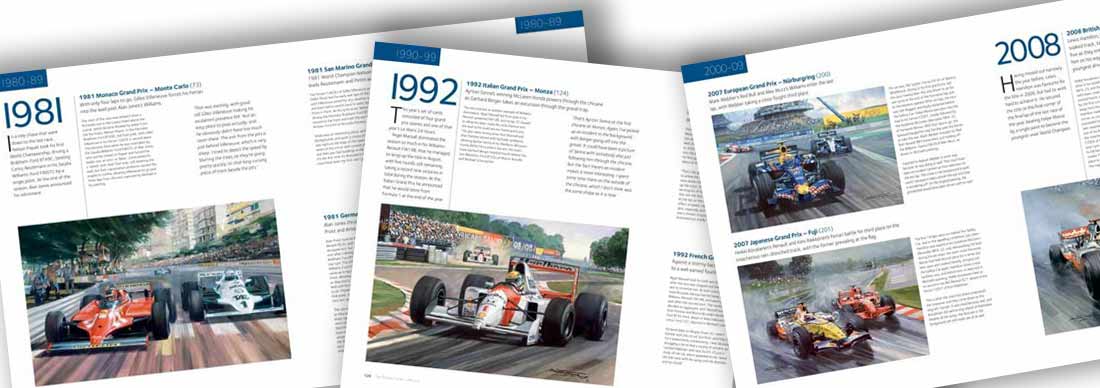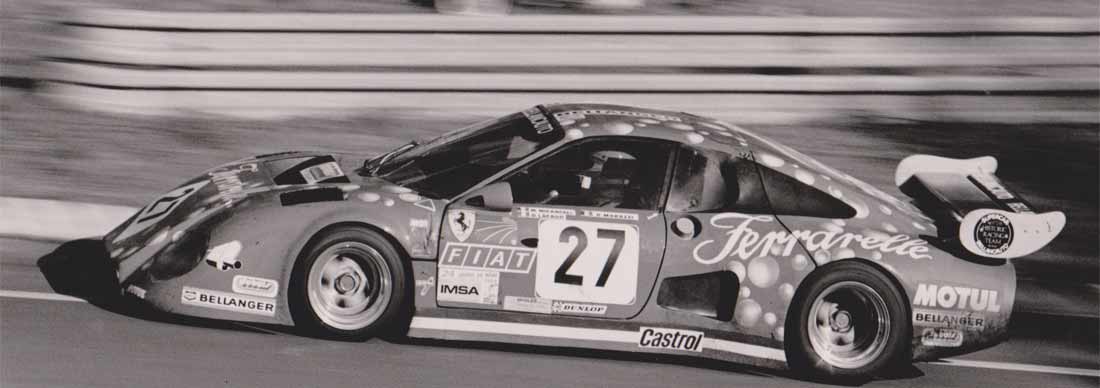
The book I always wanted, and have now written!
By Chas Parker
For over 50 years, renowned motor sport and aviation artist Michael Turner annually produced a set of paintings depicting stand-out moments from that year’s Formula One and sports car racing season.
The paintings were reproduced as a set of Christmas cards and made available through Michael’s own company, Studio 88, which he formed in 1963. Over the years, these cards became highly-collectable to the extent that, in 1992, Michael’s wife, Helen, formed a Collectors’ Club which quickly gained a worldwide membership until closing its doors in 2012.
The idea for producing a set of Christmas cards depicting motor racing scenes instead of the usual mixture of holly, snowmen and robins, came from the man who dreamed up many good motor racing-related ideas - John Webb, then head of Motor Circuit Developments which ran Brands Hatch, Mallory Park, Snetterton and Oulton Park. Michael told me that he remembers thinking, ‘What a strange idea. Who wants Christmas cards with racing cars on?’ But John Webb, ‘seemed to think it was a good idea. Of course, he was quite perceptive, and he obviously knew there were a lot of enthusiasts who would buy a card which reflected their interests.’
The first set of six cards were produced by John’s company, Motor Racing Publications, in time for Christmas 1960 and proved successful enough for the exercise to be repeated the following year, this time with a choice of two sets, and again in 1962. In 1963 Michael decided to go it alone and he and Helen established Studio 88, so named because Michael’s studio was at his parents’ house at 88, Kingsfield Avenue, North Harrow.
I’d been aware of Michael’s paintings and the annual set of Christmas cards for some years as a teenager, having seen advertisements in Motor Sport and Autosport magazines, but it wasn’t until about 1975 that I bought my first set. Receiving the catalogue from Studio 88 made me realise that a number of cards from previous years were still available and so I set about gradually building up a collection and filling in gaps.
When the Collectors’ Club was established in 1992, I became one of the founder members, and I was fortunate enough to meet Michael and Helen, together with their son Graham, also an accomplished artist, and his wife Anita, on a number of occasions at the bi-annual exhibition which Studio 88 ran in London. I continued to collect the cards each year, a hobby taken up by my two sons as well. On the occasion of the 50th anniversary of the cards in 2013, I wrote a short article for Motor Sport, and it was then that the germ of an idea of producing a book which would detail every single card first came to mind.
I still have a few gaps in my collection of the early cards and so the idea of having a book, a reference work if you like, containing every single card that was issued, was very appealing. With help and encouragement from Michael, I’ve ended up writing the book that I’ve always wanted, covering the entire collection of cards produced between 1960 and 2016.
Each card is reproduced, together with its original caption, a brief synopsis of the event depicted, and Michael’s fascinating recollections of why he chose that particular subject and setting. The subjects range from heroes of the 1960s such as Jackie Stewart [who has written a glowing foreword], Jim Clark, Graham Hill and John Surtees, to modern day drivers including Lewis Hamilton and Sebastian Vettel, and the tracks include classics such as the Nürburgring, Spa, Monaco and Silverstone. Some sports car events such as the famous Le Mans 24-Hours are also included.
Working with Michael to produce this book has been an absolute delight, although the lockdown caused by the COVID-19 virus meant that the majority of the conversations had to be undertaken over the telephone. With both of us slightly hard of hearing, this proved challenging at times but we got there. A visit to Michael’s Aladdin’s cave of a studio is always a pleasure, and I happily spent time with him when we could, going through the collection.
It goes to say that I couldn’t have written this book without Michael’s help and enthusiasm and thanks must also go to Philip Porter for his faith in the idea.
Other articles by Chas Parker






Leave a comment
This site is protected by hCaptcha and the hCaptcha Privacy Policy and Terms of Service apply.